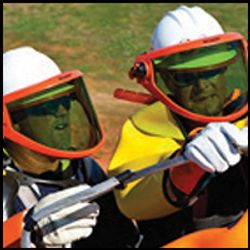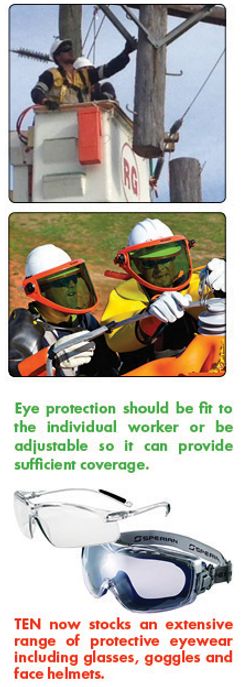Eye Protection
17 Oct, 2014
Damage to the eye can be avoided by suitable design and engineering controls, following well-established safe working procedures and wearing suitable eye protection.
There are staggering figures that drive home the importance of protecting the eyes of workers via personal protective equipment (PPE) such as safety glasses; goggles; hybrid eye safety products, which combine the comfort of glasses with the side protection of goggles; face shields; full-face respirators; and helmets.
The majority of workplace eye injuries are caused by small particles or objects (such as metal slivers, wood chips or dust) striking or grazing the eye. Most result from flying or falling objects or sparks striking the eye, often with objects smaller than a pinhead being the cause of the injury.
Blunt force traumas caused by objects striking the eyes or face or from a worker running into an object are another threat, as are chemical burns from splashes of industrial chemicals or cleaning products.
Occupations and Eye Injuries
Craft workers have the highest rate of eye injuries, while electrical workers and plumbers are in the top five trades. Because different hazards require different types of protection, it is recommended to evaluate the following before selecting the appropriate eye protection:
- The nature and extent of the hazard, including regulatory requirements when applicable
- The circumstances of exposure
- Other protective equipment used - integration
- Personal vision needs
Eye protection should be integrated with other PPE to achieve head-to-toe protection. It also should be fit to the individual worker or be adjustable so it can provide sufficient coverage. A very high percentage of the injuries to workers wearing eye protection result from objects or chemicals going around or under the protective device. Protective eyewear also should be comfortable and allow for sufficient peripheral vision.
Minor Injuries, Long-Term Problems
An on-the-job eye injury can cause lasting and permanent vision damage, potentially disabling a worker for life. Even “minor” eye injuries can cause long-term vision problems and suffering, such as recurrent and painful corneal erosion from a simple scratch from sawdust. However, it is estimated that 90 percent of eye injuries can be prevented through the use of proper protective eyewear.
With a statistic as compelling as this, it makes both common and economic sense to do everything possible to make sure workers have the right PPE to protect their eyes on the job. With such a wide array of comfortable and stylish products on the market today, there is really no excuse for workers not to wear protective eyewear.
Source:http://ehstoday.com/ppe/eye_face_head/watch_importance_protecting
|




